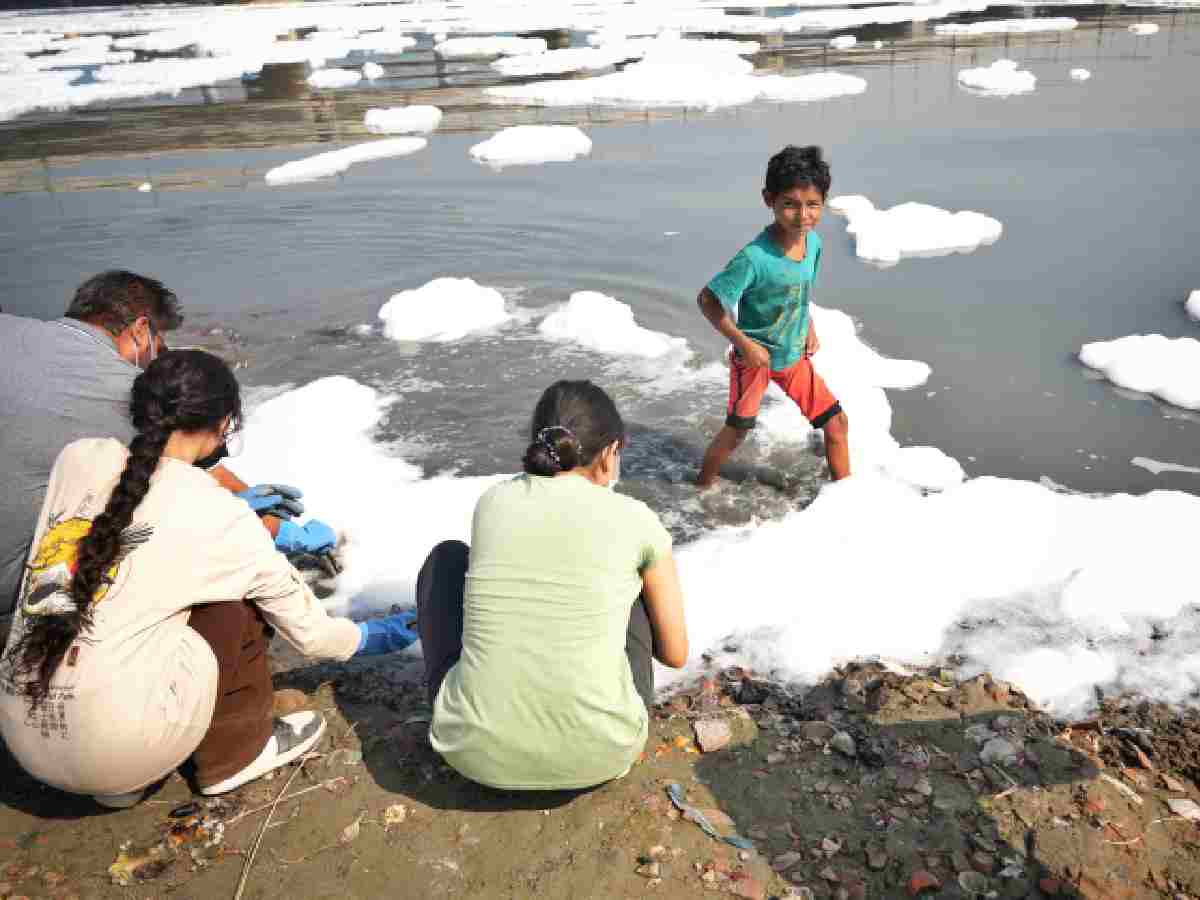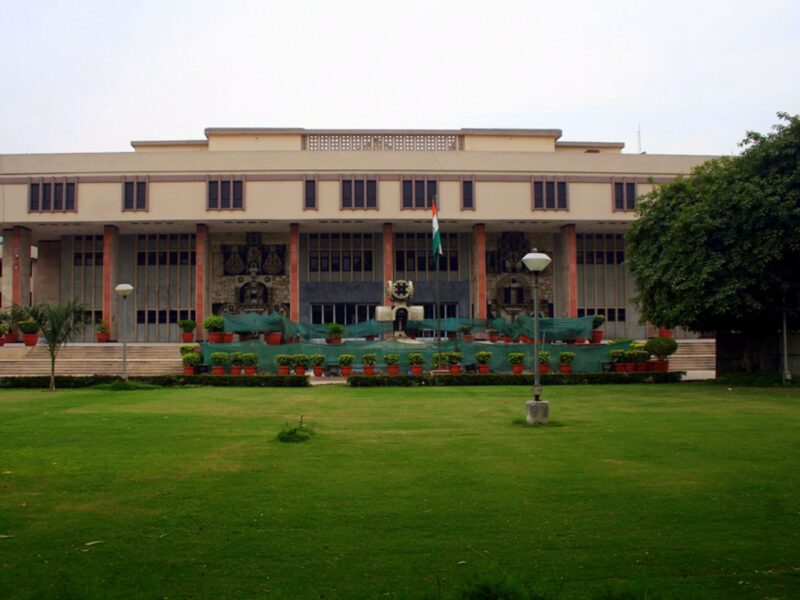Despite tall claims by the newly formed Bharatiya Janata Party (BJP)-led Delhi government to rejuvenate the Yamuna, the river’s pollution levels have reached alarming proportions, raising serious concerns about the national capital’s clean drinking water supply. Environmentalists and health experts have sounded the alarm, citing non-compliant sewage treatment plants (STPs), unchecked industrial effluents, and diminishing river flow as urgent issues that threaten public health and the ecological balance of the Yamuna.
A recent report by the Delhi Pollution Control Committee (DPCC), titled Water Quality Status of River Yamuna and dated April 23, 2025, paints a grim picture. It states that the faecal coliform level at Wazirabad—where the river enters Delhi—has surged to 5,400 MPN/100 ml, which is 115% higher than the permissible limit set by the Central Pollution Control Board (CPCB). Faecal coliform refers to a group of bacteria found in the intestines and faeces of warm-blooded mammals, including humans.
Additionally, the Biochemical Oxygen Demand (BOD) level at the same location was recorded at 6 mg/l, double the acceptable threshold. These figures indicate the presence of untreated organic waste and pathogenic bacteria that pose severe health risks. BOD measures how much oxygen bacteria need to decompose organic matter in water; high BOD means more pollution and lower oxygen levels for aquatic life.
However, DPCC’s March 2025 report stated that the faecal coliform level at the Wazirabad barrage was within permissible limits, while the BOD level was even higher at 7 mg/l—a matter of great concern.
Source of pollution
Environmental activist Varun Gulati attributed the spike in pollution to reduced river flow. He also pointed to the thousands of industries and residential areas in Haryana that discharge chemical effluents and wastewater directly into the Yamuna.
“The major reason behind the increase in pollution levels in the river is that multiple drains carrying household and industrial wastewater from Haryana are being directly dumped into the water body,” Gulati said. “For instance, drain number 2 comes from Panipat, carrying chemical effluents from numerous industries and household waste, all of which is dumped untreated into the Yamuna at Khojkipur.”
He also flagged official inaction. “The desilting of drain number 8 has not been done by the concerned authorities to date. This drain merges into the Yamuna at Palla and carries wastewater from Kundli, Piaomaniari, and Friends Colony in Haryana. Most residents of these areas hire private tankers to dump wastewater and chemical effluents into the drain,” Gulati claimed.
He asserted that authorities must take stern action against industries polluting the river and ensure proper drainage systems are in place. “The government should ensure that residents do not have to hire private tankers to dump waste directly into the drains without any treatment,” he said.
Experts slam fragmented approach
Bhim Singh Rawat, Associate Coordinator at the South Asia Network on Dams, Rivers and People (SANDRP), criticised the government’s approach, calling it fundamentally flawed.
“The government treats the Yamuna merely as a drain, focusing only on cleaning without a holistic revival strategy,” Rawat said. “Without a comprehensive plan that prioritises restoration over repetitive clean-up efforts, the Yamuna faces a bleak and worsening future.”
Rawat highlighted three key issues requiring urgent attention. “First and foremost, the lack of adequate ecological flow is the primary cause of the crisis—this is the ‘elephant in the river’ that authorities continue to ignore,” he said. “Central, Delhi, and other basin state governments must commit to a concrete action plan with fixed deadlines to restore these flows.”
He added that the current system of treating effluents, whether through STPs or common effluent treatment plants (CETPs), needs a complete overhaul. “Acknowledging the systemic flaws, ensuring transparency and accountability, and releasing a white paper must be the first steps toward meaningful reform,” he emphasised.
Rawat also pointed to the harmful effects of excessive water abstraction. “The increasing water abstraction by Haryana and Delhi, coupled with the unchecked discharge of untreated effluents from upstream Haryana, is proving disastrous for the Yamuna’s health in Delhi. The Haryana government bears a key responsibility in ensuring the river reaches Delhi in a clean and flowing state,” he said.
He warned against rampant riverbed mining. “Industrial-scale mechanised riverbed mining in upstream districts of Haryana, Uttar Pradesh, Himachal Pradesh, and Uttarakhand has severely damaged the Yamuna’s hydrology and reduced lean season flows. This destructive practice must be immediately halted, and an independent investigation initiated, backed by sound scientific studies,” Rawat added.
Doctors raise alarm
The Yamuna, particularly at the Wazirabad barrage in Delhi, has become a major public health concern. Health experts warn that untreated water from this stretch contains a dangerous mix of biological and chemical contaminants.
“Consuming untreated water from the Yamuna River at the Wazirabad barrage poses serious health risks due to high levels of faecal coliform bacteria and elevated Biochemical Oxygen Demand,” said Dr Tushar Tayal, Consultant, Internal Medicine, CK Birla Hospital, Gurugram.
He explained that faecal coliform bacteria, which originate from human and animal waste, indicate sewage contamination and the likely presence of pathogens such as E. coli, Salmonella, and Pseudomonas. “These pathogens can cause a range of diseases, including diarrhoea, typhoid, and hepatitis—especially in individuals with weakened immune systems,” Dr Tayal said.
He further noted that elevated BOD levels signal the presence of large amounts of organic matter. “As this matter decomposes, it consumes oxygen, leading to oxygen depletion in the water, which harms aquatic life and disrupts the ecosystem,” he said.
Dr Tayal also warned of industrial pollutants. “Heavy metals like lead, cadmium, and mercury, typically from industrial discharges, can accumulate in the body and cause long-term health issues such as organ damage, developmental disorders in children, and increased cancer risk,” he said.
He flagged high concentrations of ammonia as another concern. “Ammonia, mostly from sewage and industrial waste, can be toxic when ingested or absorbed through the skin. Long-term exposure may impair liver and kidney function and complicate water treatment,” he added.
“Microplastics add another layer of danger. These tiny particles absorb harmful chemicals and carry bacteria. When ingested, they may cause hormonal imbalances, gastrointestinal issues, and raise cancer risks,” Dr Tayal said.
He concluded with a stern warning: “Drinking or even using such contaminated water can cause gastrointestinal infections, skin diseases, and chronic conditions linked to toxic exposure. The presence of antibiotic-resistant bacteria further complicates treatment. Given the alarming contamination, it is essential to avoid consuming untreated water from the Yamuna at Wazirabad. Effective sewage treatment and strict regulation of industrial waste are critical to improving water quality and safeguarding public health.”
Central and Delhi governments join hands to clean Yamuna
In a renewed effort to clean the heavily polluted Yamuna, the Central and Delhi governments have approved a detailed 30-point action plan after a high-level review chaired by Prime Minister Narendra Modi on April 16. The plan focuses on improving environmental flow, managing sewage and solid waste, restoring floodplains, and developing the riverfront.
Agencies including the Delhi Development Authority (DDA), National Mission for Clean Ganga (NMCG), Central Pollution Control Board (CPCB), Delhi Jal Board (DJB), Municipal Corporation of Delhi (MCD), and the Delhi government have been assigned specific responsibilities. Deadlines range from June 2025 to March 2029.
A key focus is enhancing the environmental flow (E-flow) of the Yamuna. By September 2026, 773 MLD of treated water from Coronation Pillar and Yamuna Vihar STPs and 6.23 cumecs from the Okhla STP will be released downstream to improve river flow.
Major drain management is also planned, with drains such as Barapullah, Mori Gate, and Delhi Gate to be tapped and treated before discharge. Over 1,799 unauthorised colonies will be connected to the sewage network, and new STPs will be set up at Delhi Gate, Shastri Park, and Kailash Nagar. These will add an extra 500 MLD of treatment capacity by 2029.
A Special Task Force will remove encroachments from the floodplains by September 2026, and ten floodplain restoration projects are planned, including Mayur Nature Park and Hindon Sarovar.
Other measures include solid waste removal, management of septage and dairy waste using biogas plants, a public outreach campaign, and a monitoring system for enforcement and gap analysis.
The BJP has also proposed a Sabarmati-style Yamuna riverfront, complete with entertainment hubs, and a dedicated “Yamuna Kosh” fund to support long-term clean-up efforts.





